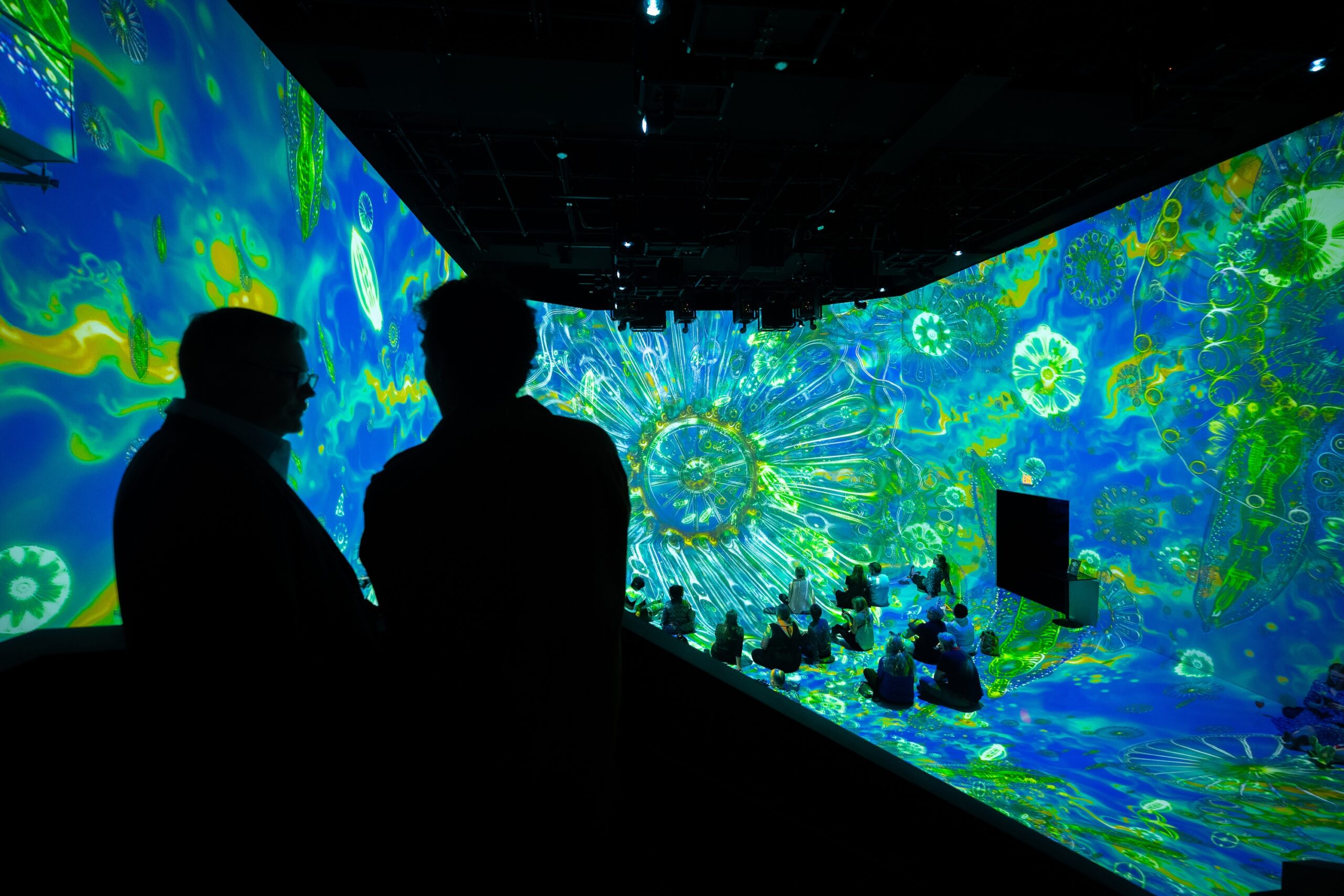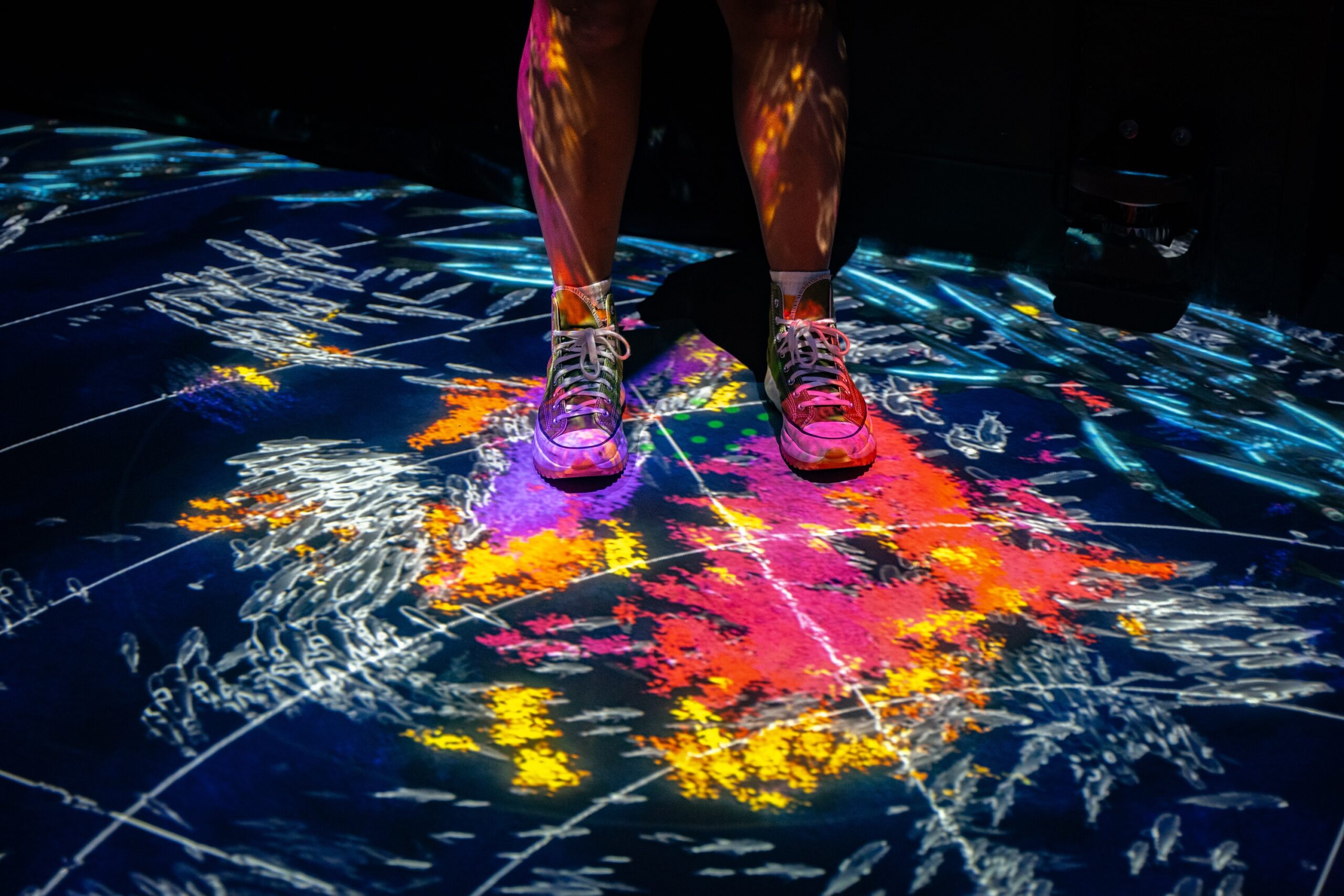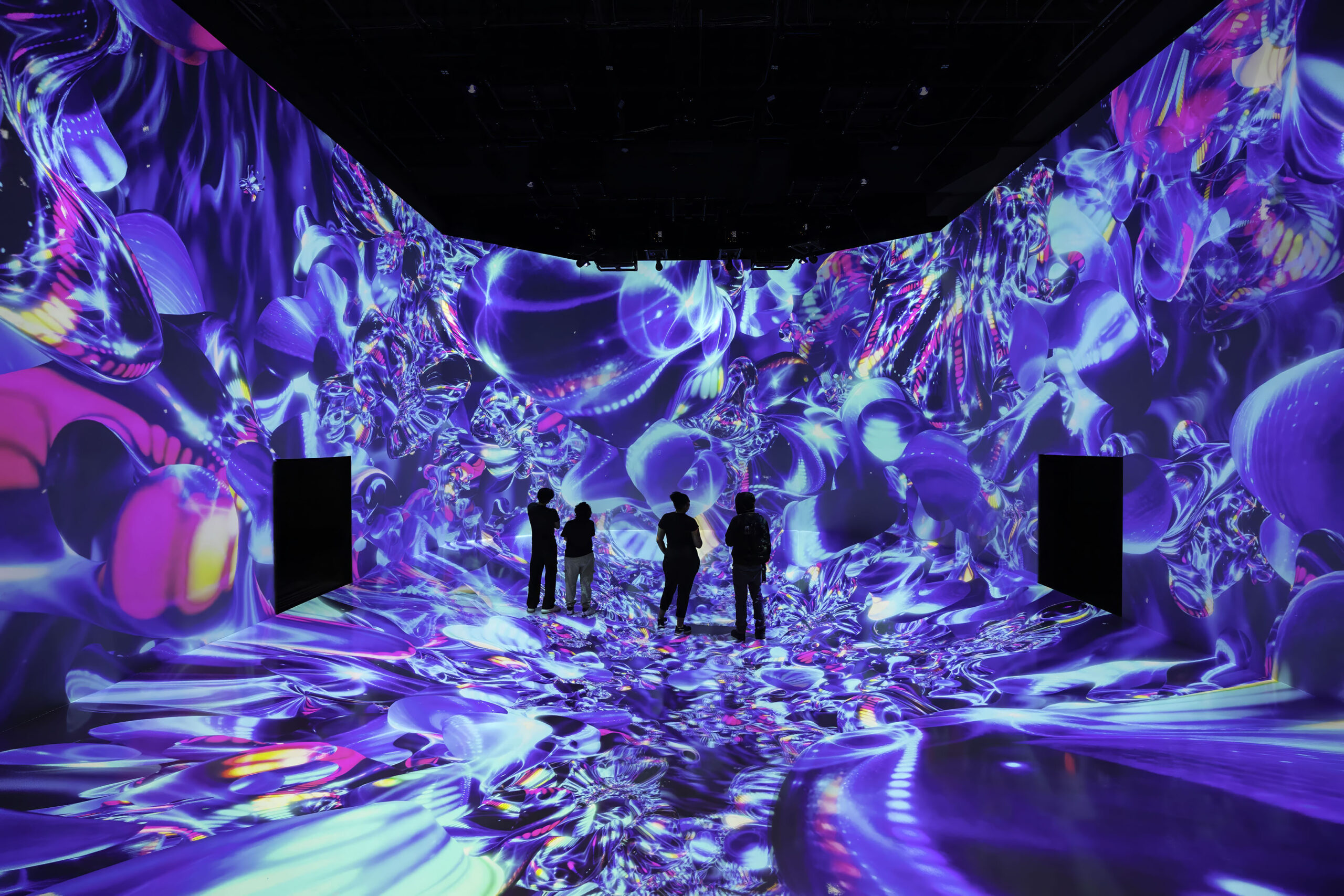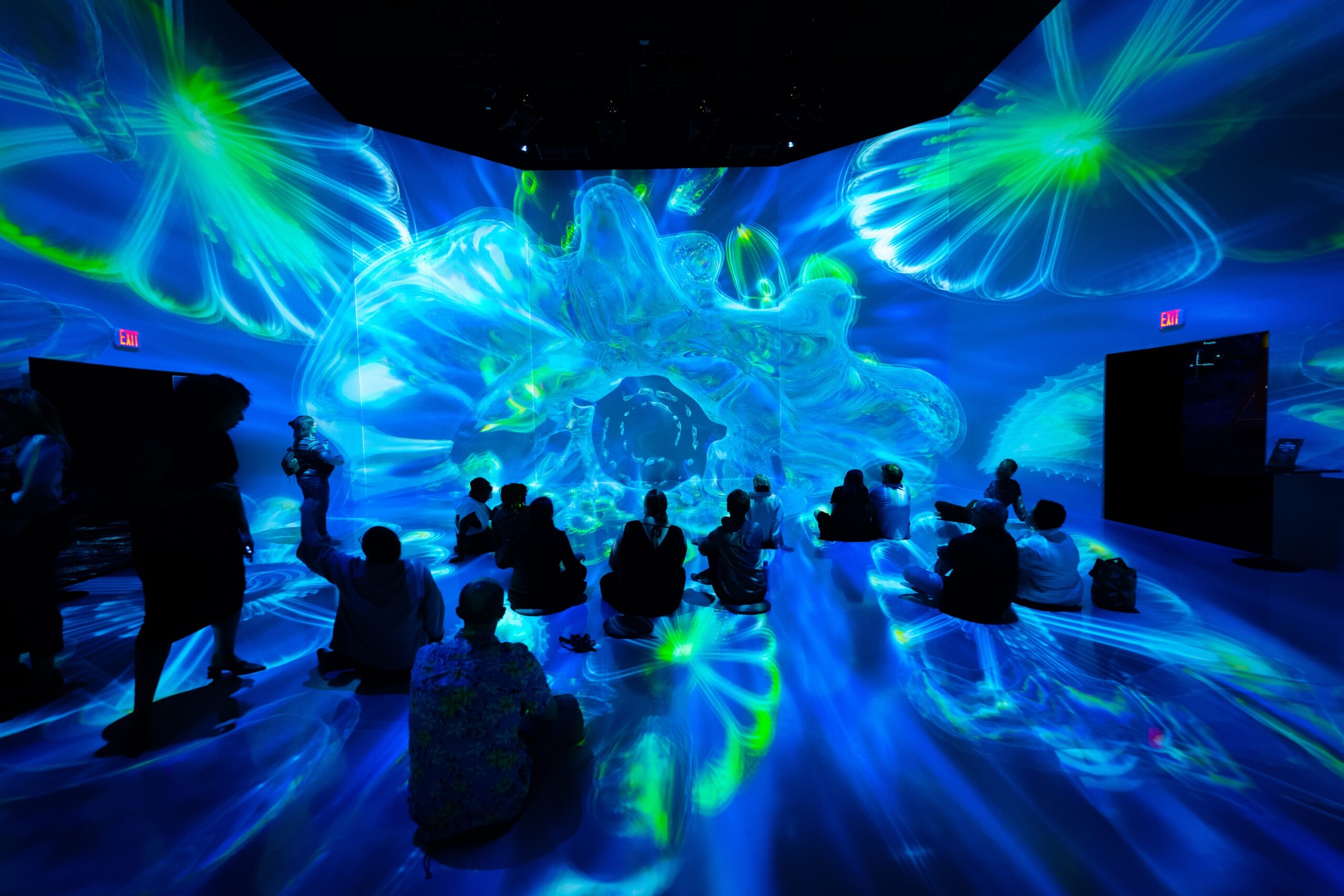When visitors walk into Artechouse’s new exhibit, they immediately greet a towering gallery of a 270-degree projection on 28-foot walls.
The display, which lasts 24 minutes and plays on a loop, is part of “Twilight Zone: Hidden Wonders of the Ocean,” which is open now and runs through mid-November. It showcases the Diel vertical migration, a pattern of movement by maritime organisms between the deep ocean and the water’s surface.
Although Brittany Riddick watches the projection daily, she doesn’t tire of it.
“Even if I’ve seen it like 50 times, I can have a conversation with a visitor at the space who’s never seen anything like this,” said Riddick, the location manager at Artechouse’s DC location near the National Mall.
“Whatever they’re going to tell me they’re excited to see or whatever they’re pointing out that’s important to them, it’s going to be totally different outside of my frame of reference,” she added.
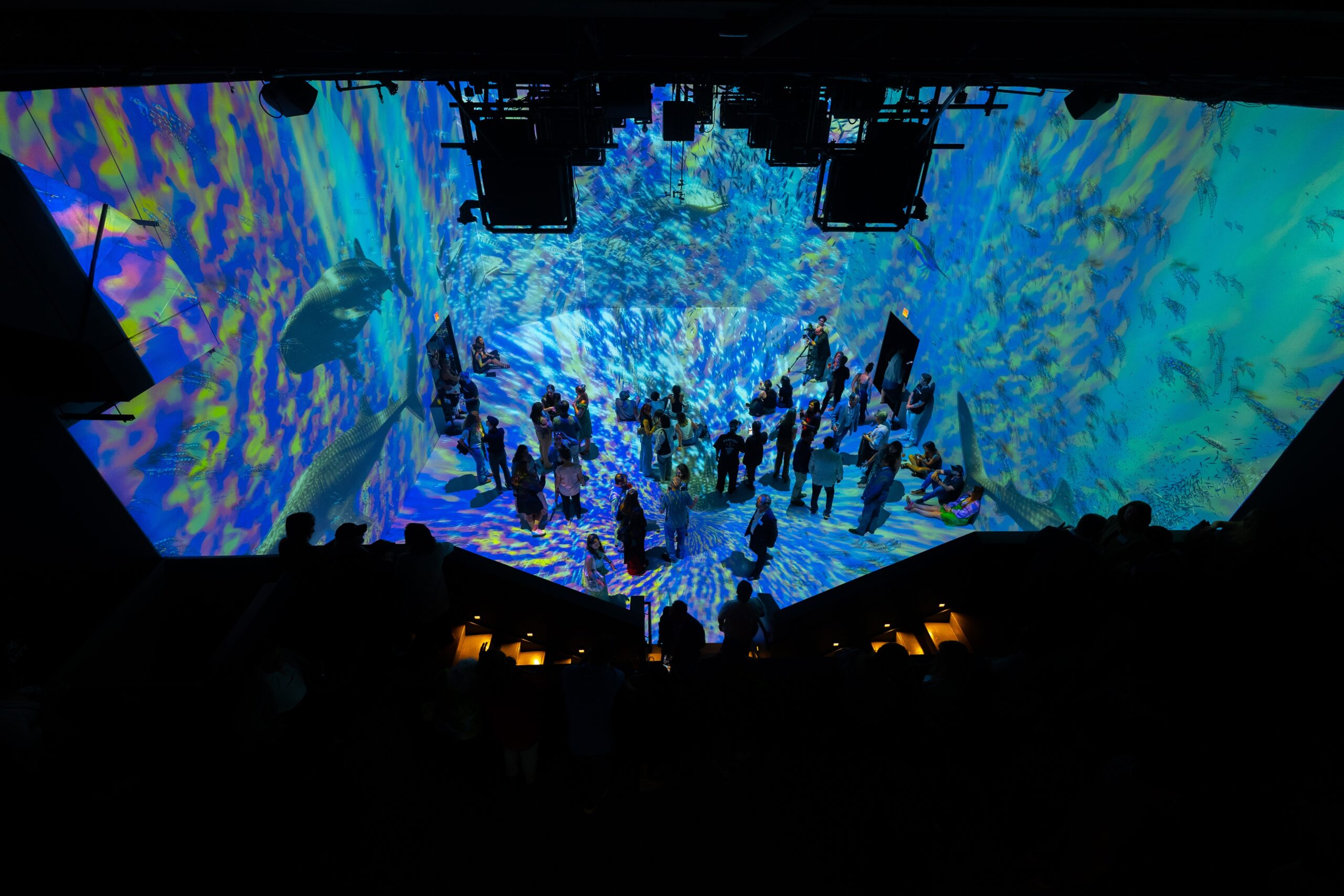
“Twilight Zone,” Artechouse’s latest DC installation, was developed in collaboration with Woods Hole Oceanographic Institution (WHOI), based in Massachusetts near Martha’s Vineyard. The exhibit aims to make the composition of the ocean accessible and engaging, said Riddick.
“We can be like the bridge between all of the scientific research and study and information, bringing it into an art space where people can come and get a basic understanding,” she told Technical.ly at the exhibit, “and then maybe the opportunity to be inspired.”
Putting the ‘A’ in ‘STEAM’
This isn’t the immersive art facility’s first scientific collaboration: Artechouse previously worked with the Thomas Circle-adjacent Society for Neuroscience and NASA on previous exhibits about the brain and space, respectively.
Partnerships like the current one with WHOI are part of a broader trend Riddick sees in focusing on “STEAM,” rather than just STEM — one that recognizes art as a crucial part of the sciences.
Developing exhibits like the one at Artechouse is one way to do that, Riddick said, and that mission attracted her to the organization. She originally started as a volunteer and was later hired, and she’s now worked there for six years.
“I could sit down and go onto the Woods Hole Oceanographic Institution’s website,” Riddick said. “But how much more engaged am I going to be in understanding it, and able to make a personal connection with it, if I’m standing in an immersive art space, looking at something that’s using modern technology, that I feel like I can relate to and research more on my own?”
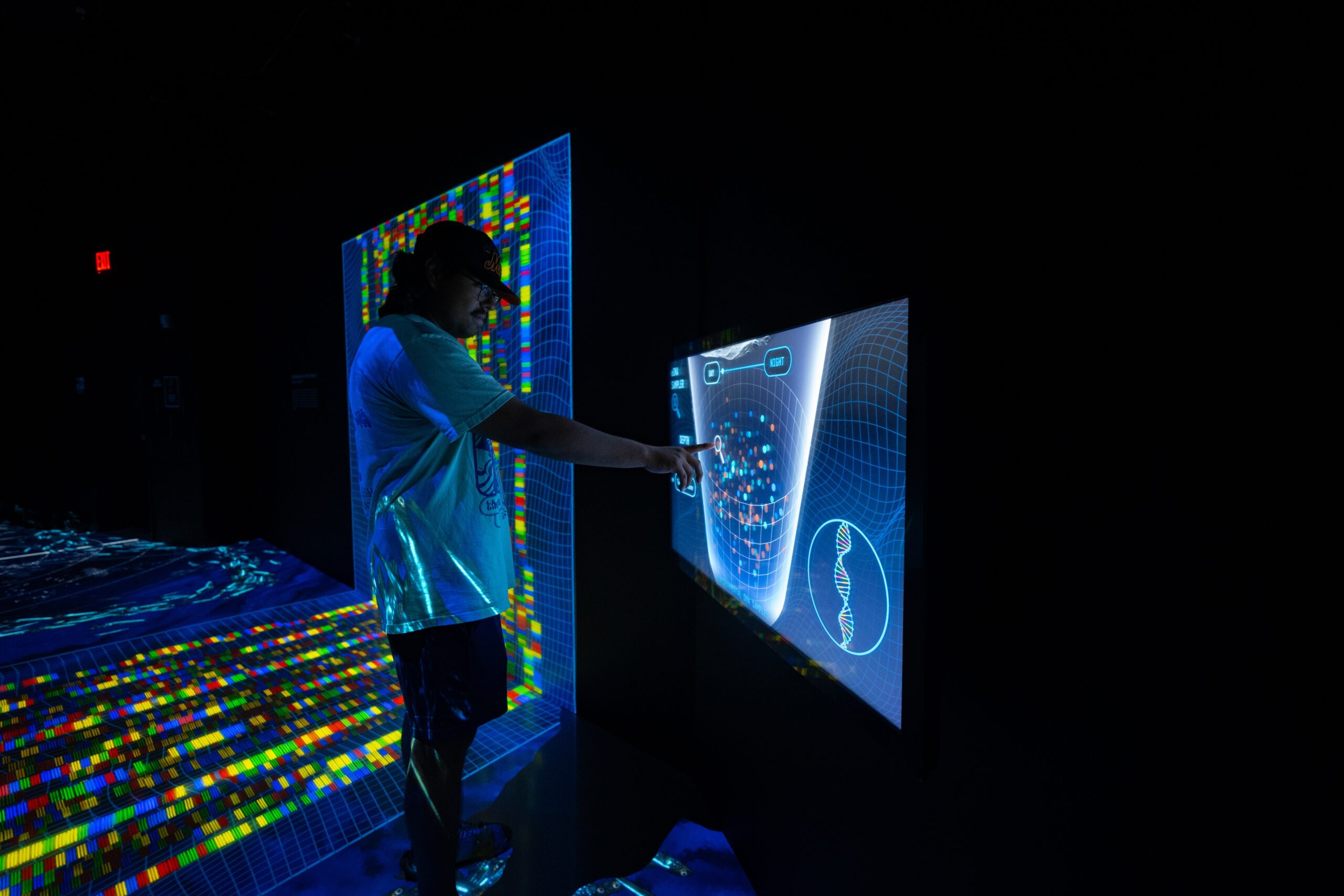
Artechouse, which was founded in 2015, has additional locations in New York City, Miami and, most recently, Houston, which opened in July. The DC outpost first opened in 2017.
The couple behind the concept, Tatiana Pastukhova and Sandro Kereselidze, also recently announced a new project in DC’s Cleveland Park neighborhood to reimagine the shuttered Uptown Theater by combining cinema with technology.
The science behind the immersion
Much of “Twilight Zone” focuses on sensing movement, Riddick outlined.
One portion uses a Lidar sensor, a technology measuring distance by using laser beams, to mimic sonar in the ocean. As visitors walk through this section, different images pop up under the person’s feet.
There’s also a replica of an Atolla jellyfish that lights up as people walk along the edge. It’s made possible by using IR sensors and a 360° camera, per Riddick. It was developed by Ksawery Kirklewski, who recently worked on visuals for the Grammy-winning musician Childish Gambino’s most recent tour.
Much of the work is produced by in-house staff, said Riddick, but Artechouse occasionally contracts out to artists like Kirklewski.
Artechouse also has an app for visitors to learn more about different parts of the exhibit, including at the bar. There are QR codes to be scanned throughout, and it has extended reality features.
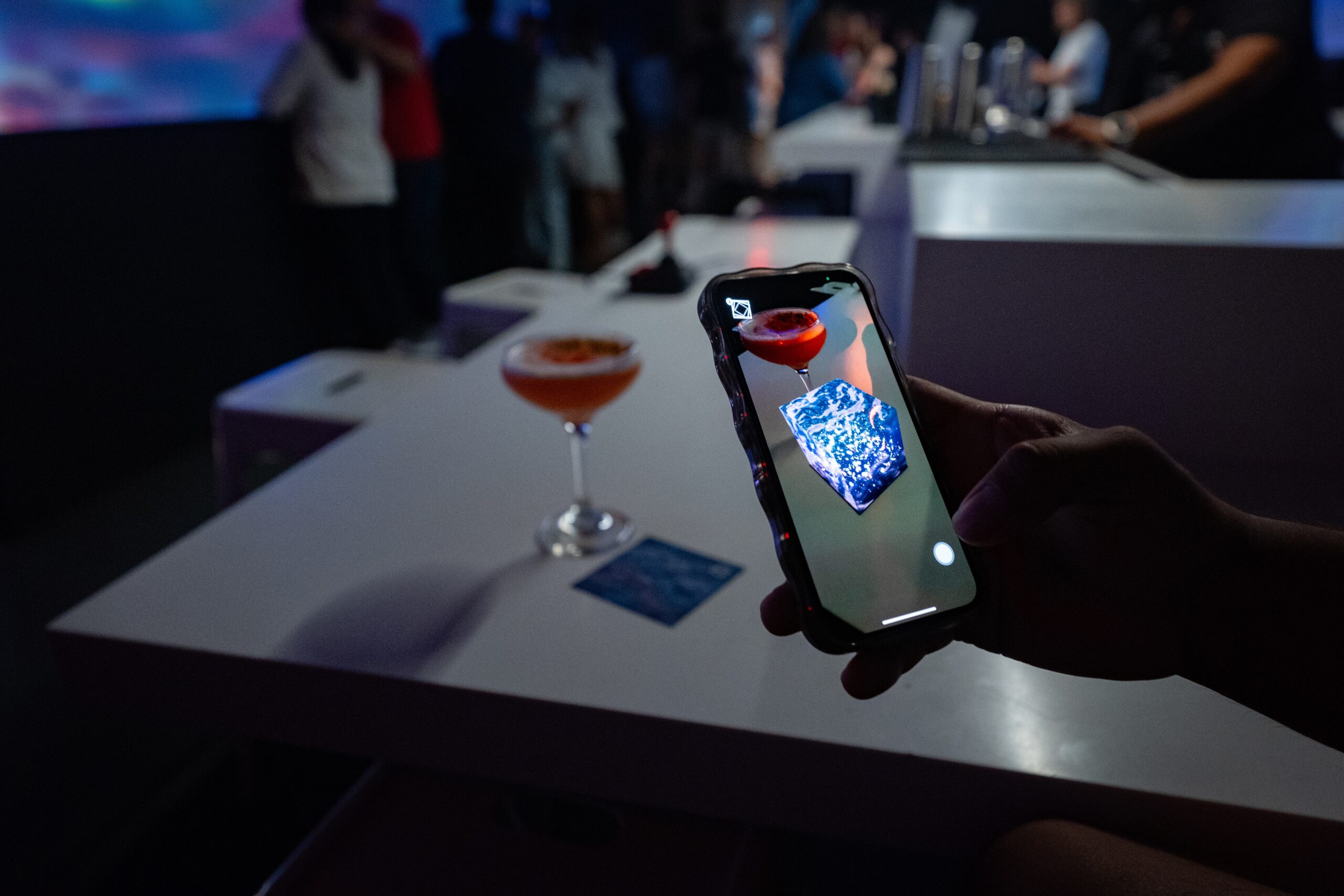
Typically, the partnerships that bring these works to Artechouse follow a lengthy process. This collaboration was a couple of years in the making, Riddick said.
Developing exhibits like this one involves gathering a great amount of research and data, and interpreting it in an art form like an Atolla jellyfish, for example.
After this collaboration and the previous work with NASA and the Society for Neuroscience, Riddick said she’s curious about what frontier Artechouse will explore next.
The scientists out of the Woods Hole Oceanographic Institution were happy with the exhibit as they walked through, Riddick said, because it helped make their research understandable to the average person.
“It looks really beautiful,” Riddick said, “and gives you a very simple-to-understand version of all of the high-level research that they’re doing.”
